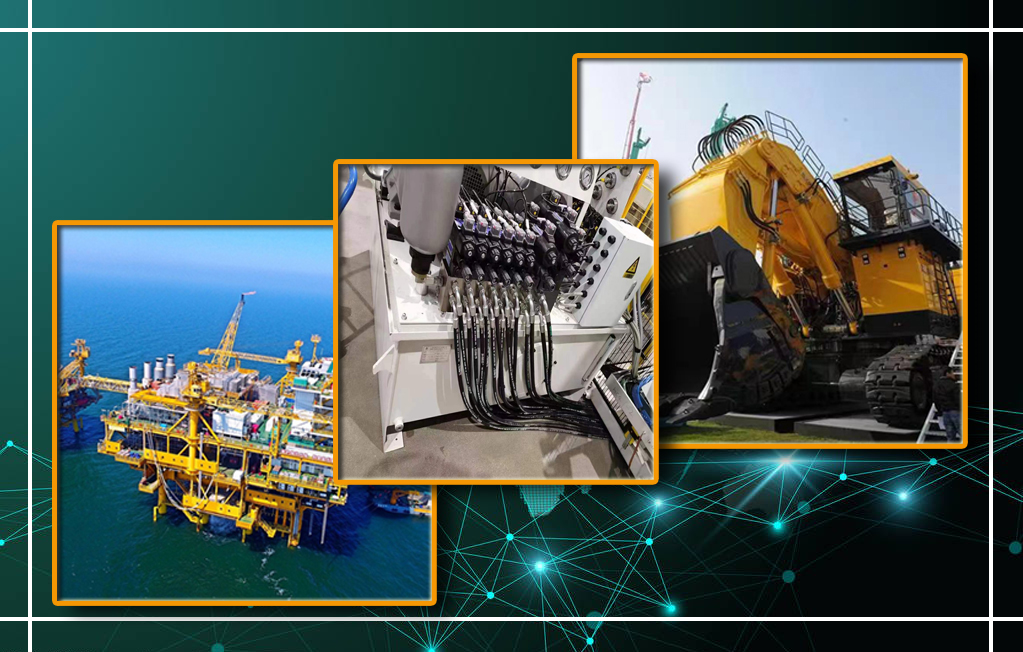335345435
Nov . 10, 2024 15:15 Back to list
OEM Black High Pressure Hydraulic Hose for Industrial Applications and Equipment
Understanding OEM Black High Pressure Hydraulic Hose
Hydraulic systems are fundamental to various machinery and industrial processes, offering efficient power transfer and control. One of the essential components of these systems is the hydraulic hose, particularly the OEM (Original Equipment Manufacturer) black high-pressure hydraulic hose. This type of hose is designed to withstand extreme conditions and provide reliable performance.
What is an OEM Black High Pressure Hydraulic Hose?
An OEM black high-pressure hydraulic hose is a specialized type of tubing designed to transport hydraulic fluids under high pressure. Typically used in equipment that operates at elevated pressures, such as excavators, cranes, and industrial machines, these hoses are constructed from durable materials to ensure longevity and safety.
The term OEM signifies that the hose is manufactured according to specific design and performance standards set by equipment manufacturers. This adherence to quality standards ensures compatibility and reliability when integrated into hydraulic systems.
Key Features and Benefits
1. Durability and Strength One of the most critical attributes of OEM black high-pressure hydraulic hoses is their durability. They are constructed using reinforced layers of rubber, thermoplastic, or other materials resistant to wear and tear. This construction enables them to handle high pressures without rupturing, making them a safe choice for demanding applications.
2. Temperature Resistance These hoses are designed to perform in a wide range of temperatures. Their black exterior also provides UV resistance, which is essential for outdoor applications where sunlight exposure can degrade materials over time.
oem black high pressure hydraulic hose

3. Flexible Design Despite their robust construction, OEM high-pressure hydraulic hoses maintain flexibility. This flexibility allows them to be routed easily around tight corners and obstacles within complex machinery setups, promoting ease of installation and reducing stress on the hose during operation.
4. Leak Resistance One of the most significant risks in hydraulic systems is the potential for leaks. OEM hoses are designed to minimize this risk through precision engineering and high-quality materials, ensuring that hydraulic fluids are contained effectively. This leak-resistant feature not only improves system efficiency but also enhances workplace safety.
5. Custom Lengths and Specifications OEM hoses can often be produced in various lengths and diameters to meet the specific requirements of different applications. This customization allows manufacturers and users to select hoses tailored to their machinery and operational needs, ensuring optimal performance.
Applications of OEM Black High Pressure Hydraulic Hose
These hoses are widely used across various sectors, including
- Construction Heavy machinery such as bulldozers, backhoes, and cranes all rely on high-pressure hydraulic hoses for operation. - Manufacturing In manufacturing environments, hydraulic hoses power machines that require precise control and significant force, such as presses and robotics. - Agriculture Modern agricultural equipment uses these hoses to operate hydraulic lifts, plows, and other attachments essential for effective farming. - Automotive In automotive applications, high-pressure hoses are used in hydraulic steering systems and brake systems, critical for safety and performance.
Conclusion
In conclusion, the OEM black high-pressure hydraulic hose is indispensable for modern machinery and hydraulic systems. Its durability, flexibility, and resistance to wear and tear make it a preferred choice across various industries. Companies that prioritize quality OEM parts can significantly increase the efficiency and safety of their operations. As technology continues to advance, the importance of high-quality hydraulic hoses will only grow, underscoring the need for reliable suppliers and manufacturers who understand the demands of modern applications. Investing in OEM hoses ensures that machinery operates smoothly, safely, and effectively, leading to increased productivity and reduced downtime in industrial settings.
-
SAE 100 R17 Black Smooth Cover Hydraulic Hose
NewsMar.07,2025
-
SAE 100 R17 Black Smooth Cover Hydraulic Hose
NewsMar.07,2025
-
SAE 100 R17 Black Smooth Cover Hydraulic Hose
NewsMar.07,2025
-
SAE 100 R17 Black Smooth Cover Hydraulic Hose
NewsMar.07,2025
-
SAE 100 R17 Black Smooth Cover Hydraulic Hose
NewsMar.07,2025
-
steel wire braided hydraulic hose
NewsMar.07,2025



